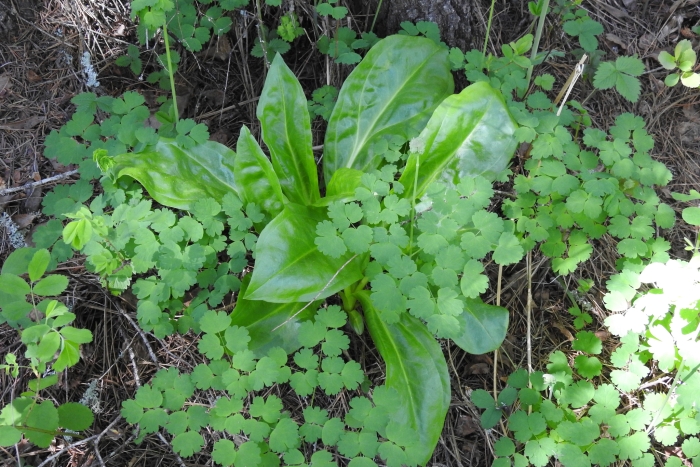Clustered Green Gentian
(Frasera fastigiata)
Clustered Green Gentian (Frasera fastigiata)
/
/

Ben Meredyk
CC BY 4.0
Image By:
Ben Meredyk
Recorded By:
Copyright:
CC BY 4.0
Copyright Notice:
Photo by: Ben Meredyk | License Type: CC BY 4.0 | License URL: http://creativecommons.org/licenses/by/4.0/ | Rights Holder: Ben Meredyk | Publisher: iNaturalist | Date Created: 2021-05-13T12:20:31-07:00 |

























Estimated Native Range
Summary
Frasera fastigiata, commonly known as clustered green gentian, is a perennial herb native to montane meadows, subalpine zones, and open coniferous forests of the northwestern United States. It is particularly adapted to the Cascade Range and the Northern Rocky Mountains. This species can exceed one meter in height and features a single, erect stem with a rosette of oval or spoon-shaped basal leaves. During its flowering season, which occurs in late spring to early summer, it produces a dense panicle of small, star-shaped flowers with greenish lobes that may have yellow or blue tinges, though they are not particularly showy. The plant’s form and the subtle coloration of its flowers add a unique texture to wildflower gardens and naturalized areas.
Clustered green gentian is valued for its adaptability to high-altitude garden settings and its low maintenance requirements once established. It is often used in native plant gardens, restoration projects, and as an accent in rock gardens. It thrives in well-drained soils, tolerates a range of soil types from sandy to loamy, and prefers full sun to partial shade. While it is not commonly affected by diseases, it can be sensitive to overwatering and root rot. This species is not known for aggressive roots or significant pest problems. It is also noteworthy for its potential medicinal uses, as many gentian species have been used traditionally for their digestive tonic properties.CC BY-SA 4.0
Clustered green gentian is valued for its adaptability to high-altitude garden settings and its low maintenance requirements once established. It is often used in native plant gardens, restoration projects, and as an accent in rock gardens. It thrives in well-drained soils, tolerates a range of soil types from sandy to loamy, and prefers full sun to partial shade. While it is not commonly affected by diseases, it can be sensitive to overwatering and root rot. This species is not known for aggressive roots or significant pest problems. It is also noteworthy for its potential medicinal uses, as many gentian species have been used traditionally for their digestive tonic properties.CC BY-SA 4.0
Plant Description
- Plant Type: Herb
- Height: 1-2 feet
- Width: 1-2 feet
- Growth Rate: Slow
- Flower Color: Blue, Green, White
- Flowering Season: Spring, Summer
- Leaf Retention: Evergreen
Growth Requirements
- Sun: Full Sun, Part Shade
- Water: Medium
- Drainage: Medium, Fast
Common Uses
Bird Garden, Butterfly Garden, Hummingbird Garden, Low Maintenance
Natural Habitat
Montane meadows, subalpine zones, and open coniferous forests of the northwestern United States
Other Names
Common Names: Monument Plant
Scientific Names: , Frasera fastigiata, Frasera carolinensis, Frasera thyrsiflora, Swertia fastigiata,
GBIF Accepted Name: